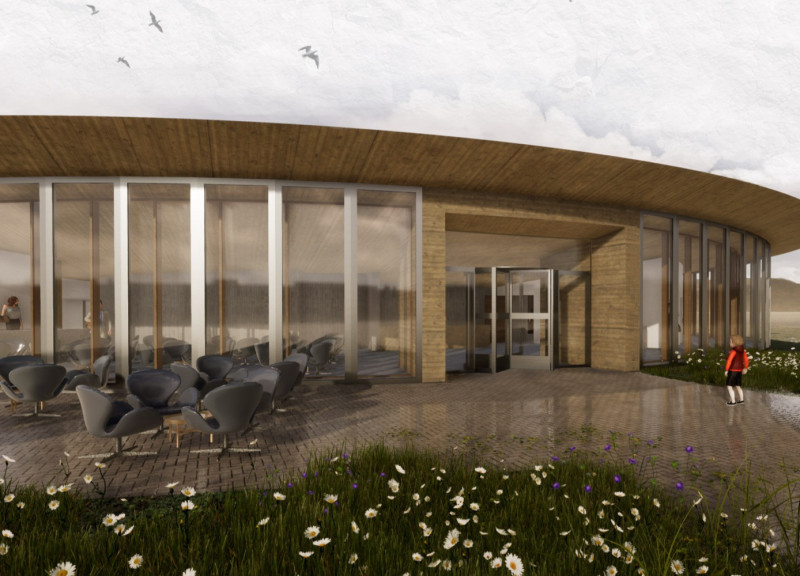5 key facts about this project
The Hotspot Museum is located in Reykjahlíð, a village near Lake Mývatn in Iceland. It serves as a center for understanding volcanic activity and the unique geological features of the region. The design concept is based on a circular form, which represents unity and harmony with nature. This shape allows the museum to connect with its surroundings and enhances the visitor experience by integrating indoor and outdoor spaces.
Geometric Structure
The museum features a layered structure designed to resemble the formations of a volcano. This approach provides distinct areas for different functions while allowing smooth movement throughout the building. The first layer includes a double skin glass facade that acts as thermal storage. It reduces energy loss and allows abundant natural light to enter. This design also contains a greenhouse element, enabling plants to thrive indoors, which strengthens the link between the museum and its environment.
Functional Zoning
The second layer is dedicated to public and private office spaces that maintain visual connections with the landscape outside. These workspaces benefit from natural light, creating a comfortable atmosphere for staff and visitors. Adjacent to this section is a cafeteria that functions separately from the exhibition areas. This design choice increases accessibility and allows visitors to engage with various offerings in a relaxed setting.
Interactive Features
The support zone occupies the third layer, housing essential services like the information desk and exhibition entrance. This configuration helps enhance the visitor experience by gathering all necessary services in one location. Interactive elements encourage engagement with the exhibits, making the space welcoming and easy to navigate.
Exhibition Space
The fourth layer serves as the main exhibition area. It features a high ceiling and a flexible layout that can accommodate a variety of exhibits. There is a discreet loading area that allows for the easy transport of items, prioritizing visitor comfort and convenience. This open space invites exploration and sets the stage for themes related to volcanic activity.
Materials such as glass, wood, basalt, concrete, and steel are used throughout the museum. These materials reinforce the building's structural integrity while reflecting the natural resources of the region. They help create a strong connection between the museum and the surrounding landscape. A key feature of the design is the magma viewpoint. This intimate space allows visitors to closely engage with the geological forces that have shaped Iceland's natural beauty.






















































